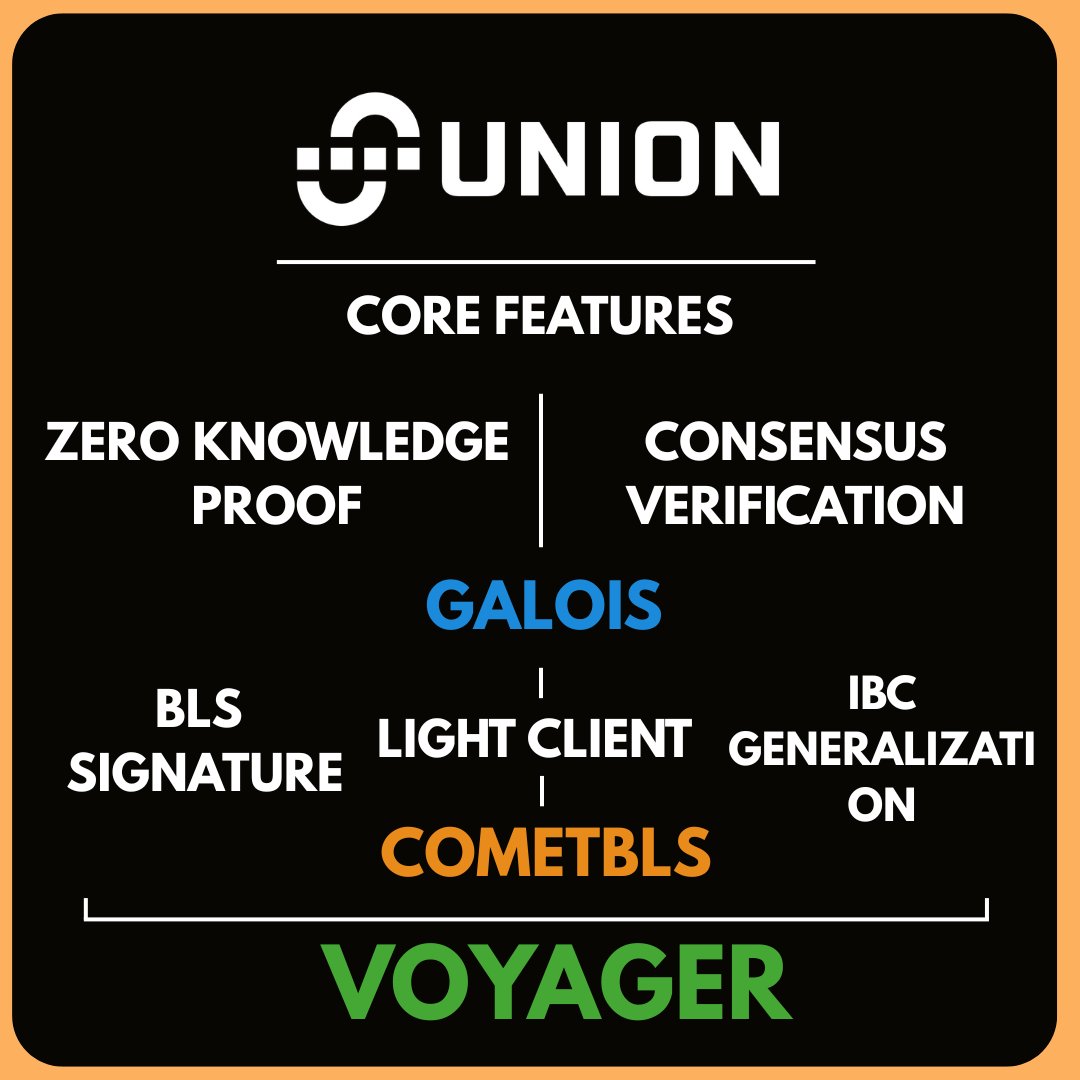[GUEST ACCESS MODE: Data is scrambled or limited to provide examples. Make requests using your API key to unlock full data. Check https://lunarcrush.ai/auth for authentication information.]  chukky [@URBANTHAMAN](/creator/twitter/URBANTHAMAN) on x 2406 followers Created: 2025-07-21 09:00:09 UTC Today let's talk about Consensus verification as part of @union_build architecture that make interoperability possible and more secure. If your're acquainted with ZK, CV should be next on your list...Save the picture below as it shows how UNION works as an L1. What is Consensus verification? Consensus verification is a process where validators on one blockchain verify that a consensus has been achieved among validators on another blockchain before accepting a transaction or message. This ensures that cross-chain interactions, such as asset transfers or message passing, are secure and trust-minimized. Unlike traditional bridging protocols that rely on centralized entities or private keys (e.g., Proof of Authority systems like LayerZero or Circle's CCTP), Union's consensus verification leverages the inherent security of the blockchain itself, trusting the chain’s validator set rather than external intermediaries. Consensus Verification and UNION Union’s consensus verification process is designed to facilitate interoperability across diverse blockchain ecosystems, including Ethereum, Cosmos, Solana and others through: • Galois: Union’s ZK consensus proving system, which generates fast, low-cost, and censorship-resistant proofs. Galois can produce consensus proofs for XXX validators in just X seconds, ensuring quick bridging and a seamless user experience. • CometBLS: CometBLS, an enhanced consensus engine built and tailored for efficient zero-knowledge proving. CometBLS aggregates signatures using Boneh-Lynn-Shacham (BLS) signatures, which reduce transaction size and on-chain computation costs compared to ECDSA verification. This allows Union to verify consensus efficiently, even on blockspace-constrained chains like Ethereum. The Union chain acts as an aggregation layer where a decentralized validator set reaches consensus on the relayed block headers. As long as at least one-third plus one of the validators are honest, the network and bridge remain secure. Voyager: Union employs a permissionless relayer called Voyager, which fetches block headers from the source chain (e.g., Chain A) and relays them to the Union chain. These block headers contain critical information about the state of the source chain, including the consensus state. Advantages of Union’s Consensus Verification • Security: By trusting the chain’s validator set rather than centralized entities, Union minimizes attack vectors that have led to billions in losses in traditional bridge hacks. • Speed: Union’s subsecond messaging protocol enables near-instantaneous cross-chain communication, critical for real-time applications like DeFi and gaming. • Scalability: ZKPs and BLS signatures reduce blockspace usage and gas costs, making cross-chain interactions efficient, even on high-cost chains like Ethereum.  XXXXX engagements  **Related Topics** [verify](/topic/verify) [blockchain](/topic/blockchain) [l1](/topic/l1) [zk](/topic/zk) [coins interoperability](/topic/coins-interoperability) [Post Link](https://x.com/URBANTHAMAN/status/1947220040073261535)
[GUEST ACCESS MODE: Data is scrambled or limited to provide examples. Make requests using your API key to unlock full data. Check https://lunarcrush.ai/auth for authentication information.]
 chukky @URBANTHAMAN on x 2406 followers
Created: 2025-07-21 09:00:09 UTC
chukky @URBANTHAMAN on x 2406 followers
Created: 2025-07-21 09:00:09 UTC
Today let's talk about Consensus verification as part of @union_build architecture that make interoperability possible and more secure.
If your're acquainted with ZK, CV should be next on your list...Save the picture below as it shows how UNION works as an L1.
What is Consensus verification?
Consensus verification is a process where validators on one blockchain verify that a consensus has been achieved among validators on another blockchain before accepting a transaction or message. This ensures that cross-chain interactions, such as asset transfers or message passing, are secure and trust-minimized.
Unlike traditional bridging protocols that rely on centralized entities or private keys (e.g., Proof of Authority systems like LayerZero or Circle's CCTP), Union's consensus verification leverages the inherent security of the blockchain itself, trusting the chain’s validator set rather than external intermediaries.
Consensus Verification and UNION
Union’s consensus verification process is designed to facilitate interoperability across diverse blockchain ecosystems, including Ethereum, Cosmos, Solana and others through:
• Galois: Union’s ZK consensus proving system, which generates fast, low-cost, and censorship-resistant proofs.
Galois can produce consensus proofs for XXX validators in just X seconds, ensuring quick bridging and a seamless user experience.
• CometBLS: CometBLS, an enhanced consensus engine built and tailored for efficient zero-knowledge proving. CometBLS aggregates signatures using Boneh-Lynn-Shacham (BLS) signatures, which reduce transaction size and on-chain computation costs compared to ECDSA verification. This allows Union to verify consensus efficiently, even on blockspace-constrained chains like Ethereum.
The Union chain acts as an aggregation layer where a decentralized validator set reaches consensus on the relayed block headers. As long as at least one-third plus one of the validators are honest, the network and bridge remain secure.
Voyager: Union employs a permissionless relayer called Voyager, which fetches block headers from the source chain (e.g., Chain A) and relays them to the Union chain. These block headers contain critical information about the state of the source chain, including the consensus state.
Advantages of Union’s Consensus Verification
• Security: By trusting the chain’s validator set rather than centralized entities, Union minimizes attack vectors that have led to billions in losses in traditional bridge hacks.
• Speed: Union’s subsecond messaging protocol enables near-instantaneous cross-chain communication, critical for real-time applications like DeFi and gaming.
• Scalability: ZKPs and BLS signatures reduce blockspace usage and gas costs, making cross-chain interactions efficient, even on high-cost chains like Ethereum.

XXXXX engagements
Related Topics verify blockchain l1 zk coins interoperability